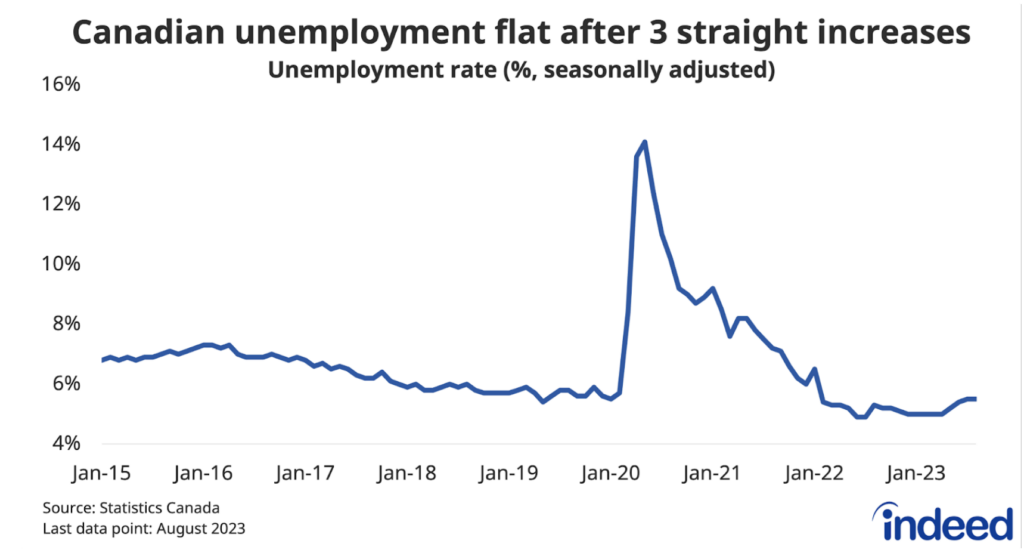The Canadian labour market continues to hold up amid gloomy consumer and business sentiment. While the 64,000 employment increase isn’t especially eye-popping given Canada’s rapid population growth, it was fast enough to push the overall employment rate higher. Throughout 2023, low layoff rates have kept a lid on the unemployment rate, even as GDP growth has flat-lined.
Not all of the details in the report matched the top-line strength. Hours worked edged down slightly, in part because job gains tilted part-time. Meanwhile, the seasonally volatile education industry was the key driver of the overall increase, while cyclical bellwethers like construction and wholesale, and retail trade, both dipped.
As surprising as the overall pace of job gains was the fact that wage growth kept chugging. There’s been a steep drop off in Canadian employer recruiting activity, yet paychecks continue to grow briskly, at a 5.0% year-over-year pace. It’s clear that overall wage growth tends to react with a lag to other developments in the labour market. One area where this is showing up is in the public sector, where pay gains are starting to catch up to recent growth in the private sector. However, with other economic data coming in weak, the headline rate of wage growth could keep inflation lingering for longer.


